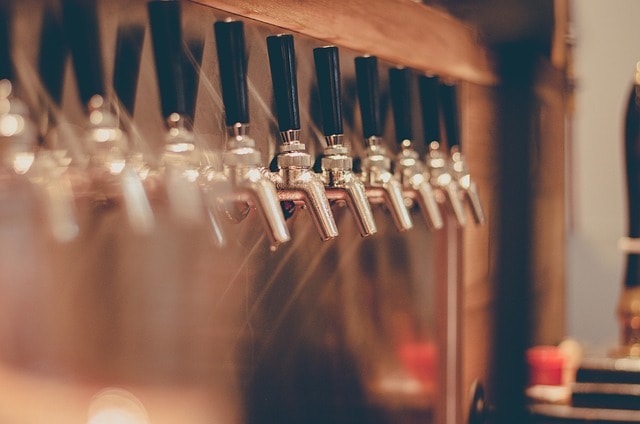Beer Systems The Big 3 Dispensing Draft Beer

As the craft beer market continues to grow, draft beer becomes a more popular choice for both restaurant and bar patrons. Consumers demand various styles of beers on draft, but also want different options within those styles (e.g., lager, IPA). Beer systems need to be versatile enough to provide variety without sacrificing quality.
Throughout the beer dispensing world, with all the different styles and classes of draft beer. There are 3 types of draft beer systems found. One is the direct draw beer system. Followed by the air-cooled beer system and finally the big remote/or long draw beer system. Each of these systems has their own advantages over the others. We will talk a little more about them below starting with the direct draw beer system.
Direct Draw Beer Systems

Direct Draw Beer Systems are by far the most common of beer dispensing systems used in all bars and restaurants today. A direct draw system consists of a beer faucet, beer shank, wall mount, regulator, and coupler for each brand. These are also the most user-friendly beer systems on the market today.
These systems are usually the easiest to maintain since they are super simple to use. This type of system is excellent for dispensing draft beer. It is also great for servers who are not familiar with remote draft beer systems, but more importantly, they have fewer reasons not to pour well. This system allows bartenders to pour with ease. Also, these systems lose the least amount of beer when they are cleaned every 2 weeks because their beer run is short.
The best thing about direct draw systems is their simplicity, variety of beers on tap, cost, and ease of use.
This system is one I would always recommend to bar owners first if they can do it.
Air-Cooled Beer Systems
An air-cooled beer system is a good choice if you are looking for a cheap way to dispense draft beer. Air cooled systems are also popular in restaurants, bars or facilities where space is limited. The downsides of these types of systems are the long-distance the beer must travel from keg to faucet. Also, many of these systems require specialized equipment such as a fan and conduit to keep the beer lines cold to the beer faucet.
This type of system is a hybrid of the two others. It's almost set up like a remote beer system...but uses the cool air in the walk-in cooler to circulate around the beer lines to the beer tap.
I personally don't care much for these beer systems because it can be a bit of a challenge to keep the beer on temp especially if there are a number of beers on tap using air.
However there is a place for them in the beer dispensing world.
Remote/Long Draw Beer Systems

A big remote beer system is a great choice if you're looking to provide a large selection of beers on tap over long distances. These systems use more beer because the distance from their keg to the faucet is significantly longer than the direct draw system. However, these systems are king when it comes to flexibility and deliverability.
Remote systems are great for places like large sports bars, hotel ballrooms or catering halls, casinos, tap Rooms, and stadiums. They can provide a large amount of variety on tap while dispensing beers to numerous locations.
It also provides flexibility for areas that don't have direct access to walk-ins. Or want to pour somewhere other than where their walk-in is.
These systems can be pricey to buy and install because they require more equipment. Such as glycol chillers, beverage conduit and beer pumps. However, they are the best choice when you need a lot of flexibility and need to deliver beer over long distances. This system is one I recommend for larger bars or if you're looking to serve beer at different locations
Conclusion
If you are starting a business soon, draft beer is one of many things to look forward to. Draft systems come in 3 main categories. These are a direct draw, air-cooled, remote/long-draw systems.
A Direct Draw System is best for bars that can serve beer right off their walk-in cooler. The ease and simplicity of these systems make them extremely popular for users.
An Air-cooled system is a hybrid of the two. A fan pushes cold air from the walk-in cooler through the flexible line to the beer faucet. Not my first choice of recommended systems. But can get the job done if you are on a budget.
A Remote/Long Draw system is best suited for bars that have a large variety of draft options because it uses more lines and equipment. The distance from keg to the faucet can be up to 800 feet, but this type of system has the greatest flexibility as it can serve beer in different locations. It also can be the most expensive to install and maintain. But it's a popular choice among bar owners that want to offer their customer's variety on tap over long distances.
As you can see, all draft beer systems provide different benefits for bars. However, your decision will be based on the size of your bar, the type of beers you wish to serve, and the space available at your location.
For more questions about draft beer questions feel free to reach out to us here.



